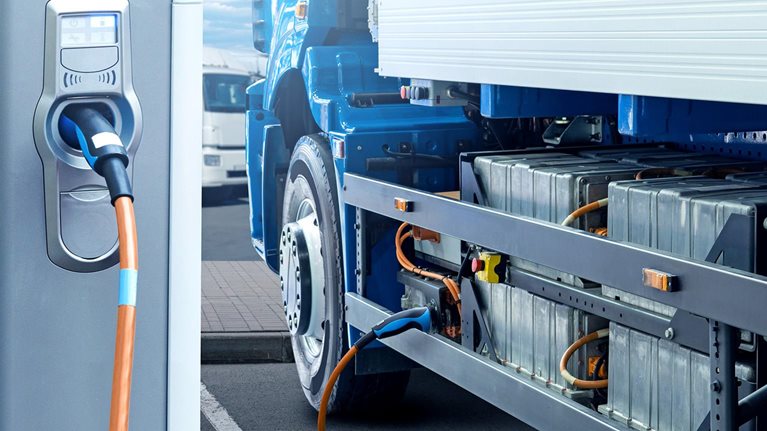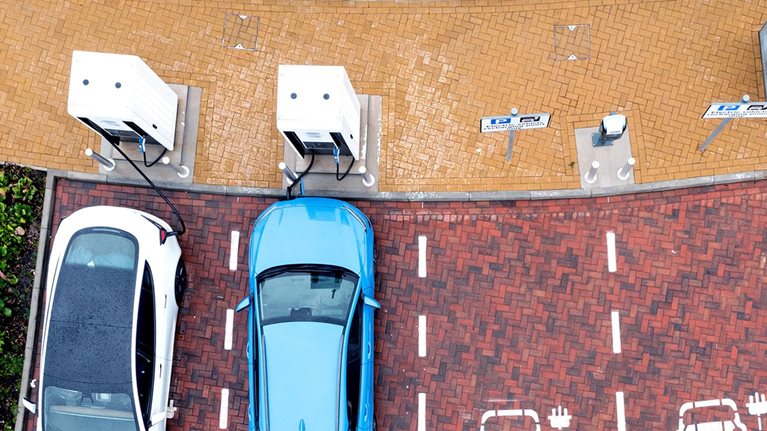In less than a decade, electric vehicles (EVs) have gone from a niche product to the nearly inevitable choice for tomorrow’s automotive players. Light commercial vehicles (LCVs), such as panel vans and minibuses, are likely to follow this same path toward electrification, primarily because of increased demand from private and large commercial customers that are decarbonizing their vehicle fleets as part of their sustainability strategies.
Given the diversity of LCV use cases and customer segments, the speed of electric power-train adoption is expected to vary across different types of LCVs. What’s more, start-ups and new market entrants are targeting specific segments with product and business-model disruptions, putting further pressure on established players.
In this multifaceted environment, LCV incumbents need to target EV uptake in their portfolios to address customer needs and maintain market share. This article provides a perspective on market segmentation and expected dynamics, EV adoption and expected growth rates, and lessons incumbents can learn from today’s new entrants.
A growing market with diverse segments
LCVs have enjoyed steady growth for almost a decade. Although the LCV market was affected by the global decrease in purchasing power during the COVID-19 pandemic, on a broad level, the market in Europe grew slowly but constantly at about 4 percent per annum from 2015 to 2021. And if the pandemic had not negatively affected the market, the growth rate would have been more than 5 percent per annum during this period. Growth is expected to continue in the years to come with an average of more than 1 percent per annum, mainly driven by three trends:
- increased emphasis on last-mile delivery, driven by continuous growth of e-commerce
- continued growth in e-grocery, which is expected to keep growing after the COVID-19 boom with CAGR of approximately 7 percent until 20301
- growth in the recreational-van market, which largely leverages LCV platforms as base vehicles in Europe
Segments of the LCV market
Compared with personal vehicles, LCVs have a much broader and more differentiated set of applications. The intended use of an LCV therefore plays a much stronger role in dictating its EV-related requirements, such as battery size and range. In turn, these requirements, as well as specific use cases or parity of the total cost of ownership (TCO), can influence consumers’ appetites for EV adoption.
Our market analysis shows ten core segments for LCVs in Europe, each with its own specific requirements (Exhibit 1). None of these segments has reached 20 percent market share, which means incumbents have had to develop flexible platforms that can be tailored to the needs of end customers. To do this, specialized upfitters can adjust and add different elements to a base vehicle, ranging from customized vehicle and body builds to telematics and fleet management and even to specialized financing, leasing, and data-enabled business models. For example, e-grocery vehicles can incorporate refrigerated units, and recreational vehicles (RVs) and ambulances can be furnished with fully customized top hats. Such upfitting often starts at about €4,000, although costs can reach or even exceed the value of the base vehicle.

The fastest-growing segments are RVs and passenger transport. The market for RVs has grown steadily over the past few years and is now considered the single largest LCV segment in Europe, a trend that is expected to continue throughout the decade.2 And although passenger transport is still a relatively small segment in the LCV market, it is expected to increase in line with the growth of ride-sharing models.
Following RVs and passenger transport, the next-fastest-growing segments are the trade and grocery segment and the courier, express, and parcel (CEP) and logistics segments. Over the past few years, both have experienced strong growth, which is expected to continue beyond the established baseline. In the trade segment, the grocery share is still rather small—for example, it is only 22 percent in Germany. However, the trend of ordering fresh food online with fastest-possible delivery, which gained significant momentum during the COVID-19 pandemic, is expected to continue with a healthy growth of more than 7 percent per annum.3 The same applies to CEP and logistics, for which the home delivery market is expected to continue growing as tech-enabled retail supergiants focus on the last-mile-delivery market. Same-day delivery and instant delivery are also likely to reach a market share of 20 to 25 percent by 2025.4 Extending service to rural areas could result in even more significant growth.
Would you like to learn more about the Battery Accelerator Team?
As some segments grow, others are expected to maintain market share. Typical LCV use cases in service industries (approximately 13 percent) and construction, crafts, and landscaping (9 percent), as well as in private applications, are expected to remain relatively stable over the next decade.
Finally, the rental and leasing business accounts for approximately 15 percent of the total market and represents parts of all other subsegments in the form of leasing vehicles to end customers. It is expected to grow faster than the market rate, driven primarily by growth in CEP and logistics as well as from customers who rent instead of fully investing in LCVs.
Three segments with varying electrification appeal
Based on their range requirements and focus areas, the ten market segments can be grouped into three distinct groups (Exhibit 2). Although not entirely homogenous, each group has a general set of considerations that incumbents need to address.

First, the high-range group, which includes RVs, requires increased battery capacity to cover significant distances and to account for variable vehicle loads. Customers demand high ranges for travel flexibility and for “off the grid” outdoor capabilities, such as electricity from the vehicle’s battery. Furthermore, such vehicles often integrate living quarters designed for daily necessities (for example, cooking and sanitary needs) as well as special or luxury equipment, all of which leads to extra weight. This increased payload could pose a challenge for OEMs, since most European countries tie driving permissions to the total weight of a vehicle. For instance, certain licenses may only allow holders to drive vehicles that weigh up to 3.5 tons, placing an upper limit on possible battery size.
Second, the special-services group combines moderate-range needs with distinct specifications. For instance, landscapers and construction companies tend to need vehicles that can handle heavy payloads, whereas service or municipal vehicles, such as ambulances, require tailored adjustments to base vehicles, necessitating significant investments in upfitting.
Third, the cost group has a strong focus on TCO because of low business margins on high cargo volumes. Markets in this segment include trade and e-grocery as well as CEP and logistics. A key concern for this segment is last-mile applications, in which customers need to maximize vehicle and cargo use over short delivery distances. In some circumstances, companies in this segment have also committed to CO2 reduction targets (especially in major cities) that may require them to drive with no emissions, which is only possible with EVs.
Across these segments, we assessed the appeal of electrification by analyzing how long it will take for electrified offerings to reach TCO parity with nonelectrified vehicles. In general, the expected timing of TCO parity for electric LCVs was driven by two key factors: desired battery size and expected annual mileage (vehicle use throughout the year). Battery sizes vary according to the required fuel ranges, with most announced LCV models requiring battery sizes between 40 and 120 kilowatt-hours (kWh) and even larger batteries expected by 2030 in certain LCV models. As for expected annual mileage, more frequent use provides a stronger incentive for earlier electrification.
In Exhibit 3, we compare examples from each of the three segments—a parcel delivery van, a crafts or services van (for instance, plumbing or telecommunications), and a camper van—to illustrate these findings.

As a member of the cost segment, the parcel delivery van is an excellent example of a racehorse for TCO parity. Its high level of use, up to about 35,000 kilometers (km) traveled per year, provides a rationale for investing in its electrification.5 At the same time, because these vehicles are mainly used to deliver parcels in populated areas, they do not require a high operating range—only around 150 km per day.6 Therefore, integrating a small-capacity battery (approximately 60 kWh) often suffices. This enables TCO parity for electric parcel delivery models as early as 2022. By 2024, these vehicles could even have a 10 percent cost advantage over conventional vehicles. Purpose-built designs could achieve further savings in operating costs.
At the other end of the spectrum is the camper van in the high-range segment. Because camper vans are not usually driven daily, annual mileage may reach only about 10,000 km. Conversely, customers expect the single-trip range of these premium vehicles to be high (approximately 300 km) to allow for longer trips to campsites with a minimum number of charging stops. For this reason, customers typically expect the largest battery capacities (more than 140 kWh) in this type of LCV. The combination of large battery capacity and low use is less favorable for TCO, which is not expected to achieve parity before 2030. That said, TCO is not as strong a driver for this segment as it is for commercial LCVs; rather, consumers are more driven by a preference for environmental solutions. Interest from these environmentally minded consumers might increase electrification opportunities in the segment even before 2030.
New entrants offer lessons for incumbents
Although LCV incumbents have a head start on developing electrified vehicles, EV adoption brings new opportunities and challenges. Today, incumbents rely on flexible base-vehicle platforms that can be adapted for different segments, often with tailored upfitting from third parties. However, this poses challenges for EV adoption, since different segments have diverging needs, particularly in regard to battery weight constraints.
In this challenging environment, start-ups and new entrants are entering the market with a single-segment-focus approach, widely starting with focus on the growing CEP segment. They are trying to disrupt the segment with innovations not only in products but also in competitive manufacturing methods and associated services and solutions (Exhibit 4). They aim to create unique selling points for customers vis-à-vis incumbent OEMs, going beyond simply meeting customer requirements to mastering LCV vehicle specifications and constraints. For instance, a driver cabin design might be optimized for easy exit and entrance from both the driver and passenger sides, which is important for the CEP segment but not as important for others. Three overarching strategies stand out: purpose-built products, purpose-built production, and purpose-built services and solutions. Incumbents should carefully consider learnings from these strategies to maximize their own competitiveness and future value creation.

Purpose-built products
New entrants often start the LCV design process with a blank sheet of paper, without constraints or limitations from an established organization, which can allow them to take advantage of different approaches and technologies. First, a single-segment focus can allow new entrants to develop competitive, differentiated products to disrupt incumbents. Second, using a flexible “skateboard” architecture means the power train and chassis are largely decoupled from the top hat, enabling OEMs to flexibly extend their portfolios with highly tailored top-hat variants. Third, developing electronic control units (ECUs) and software in-house can drive significant value. These approaches, combined with a leaner development process, can also result in drastically shortened times to market.
Purpose-built production
In combination with innovative material concepts, new entrants are developing novel production approaches. These concepts are optimized to allow for competitive variable costs and minimized investment at lower production volumes compared to multisegment approaches from incumbents.
Purpose-built services and solutions
New entrants are highlighting additional opportunities in services and solutions, the third building block to lock in customers and create additional revenue streams and margins beyond the base vehicle. Both new entrants and incumbents have the opportunity to benefit greatly from service-and-solution-based opportunities to create value because they represent approximately 50 percent of the total value pool. These services include telematics and fleet management, autonomous operation, data-enabled business models, financing and leasing solutions, and adjacent infrastructure solutions and operations consulting and activation. New entrants already show higher interest in these opportunities—for example, one company set targets to realize $15,000 in revenue from subscription-based offerings over ten years of the vehicle’s lifetime.
As electrification increases, OEMs can assess segment-specific needs and develop strategies to compete in a diverse market. Actions taken by new entrants highlight opportunities to differentiate through segment-specific designs, optimizing customers’ TCO beyond direct costs from using the vehicle (such as CEP players designing vehicles for minimum stop times). Ultimately, by considering segment-specific needs and opportunities from services and solutions while retaining high flexibility in their platform, incumbents can develop EVs that will drive Europe forward in the years to come.


